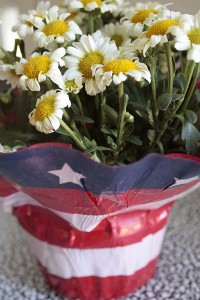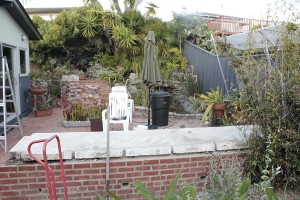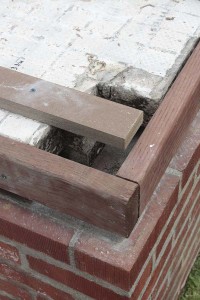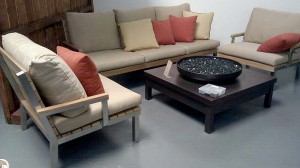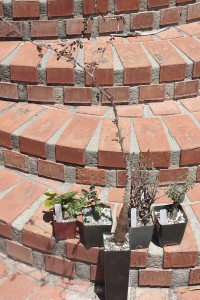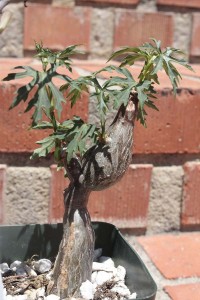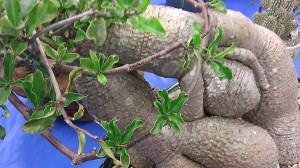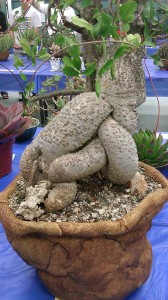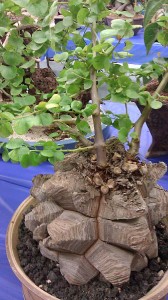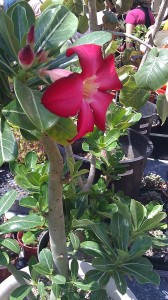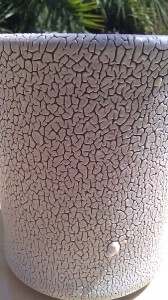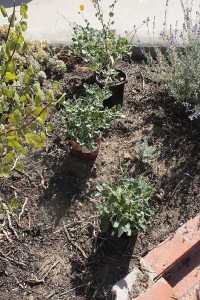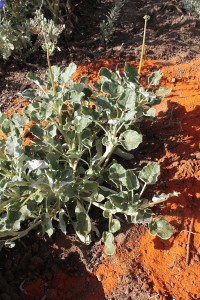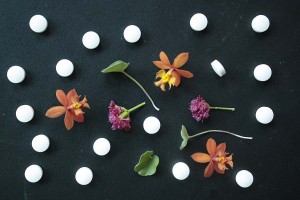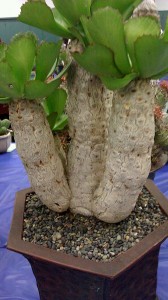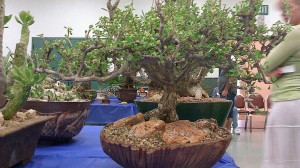If your definition of a good party is one that gets the police called on it, my July 4th party was a failure. But by other standards I think it went pretty well. (The new garden bench was really appreciated and well-used.)
As you try to play host, the party can pass by so fast you don’t have time to really take it in. And before you know everyone has left and you’re left with what people didn’t eat or drink, plus all the things people bring along, edible and not.
Inventorying the drinks it almost looks like we have more cans and bottles than we started with. I guess people were scared to try this year’s weird/unusual beverage offering, Malta India, a sweet non-alcoholic drink from Puerto Rico. We ended up with eight out of eight bottles unconsumed. And there were gifts of a lot of sixpacks of things we didn’t start out with.
There was a gift of this patriotic chrysanthemum…
…and then this…
I’ve known San Diego artist Tom Driscoll for a while, and he brought along one of his recent pieces.

For several years now he’s been making casts in found molds–the packaging for various consumer products that we usually throw away–using gypsum cement and powdered pigment. Talk about recylcing.
Here’s a preparatory installation in his studio of a big piece, Array 2, that was featured in the Here Not There: San Diego Art Now exhibition last year at the Museum of Contemporary Art, San Diego.
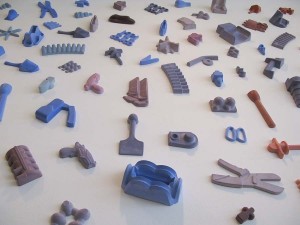
Here’s an alternate view, looking upwards, that lets you appreciate the physicality of the components.

If the only thing keeping you from bringing this piece home is that it might not match your sofa, you could reupholster your living room suite in this fabric, Alexander Girard’s 1954 Quatrefoil design, shown here in the “pink” colorway… (Image from eamesfabric.com.)
The piece that Tom brought to the party is a cast of packaging for a computer mouse. Although you look at the object and say “computer mouse,” the packaging was a simplified version of the original object. The resulting piece is more like a sketch of the original object, not a faithful reproduction. It looks great, but if you’re lucky you can complete the experience of the piece by holding it in your hand: cool, smooth, muscular and heavy, it looks and feels like an artwork crafted out of an exuberantly colored piece of stone. If Jean Arp or Constantin Brâncusi sculpted computer mice they might look and feel something like this. This is one seriously sensual object! And–yikes!–I actually have a red sofa it would match.
Thanks, Tom, and thanks to everyone else who contributed to making this a great day!


